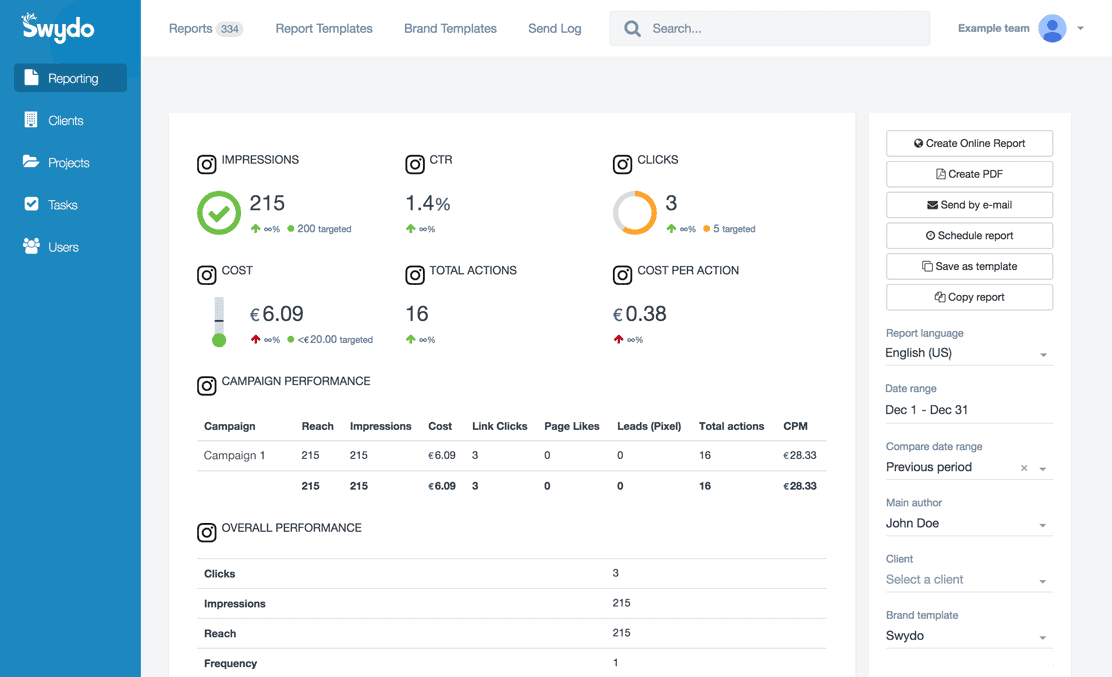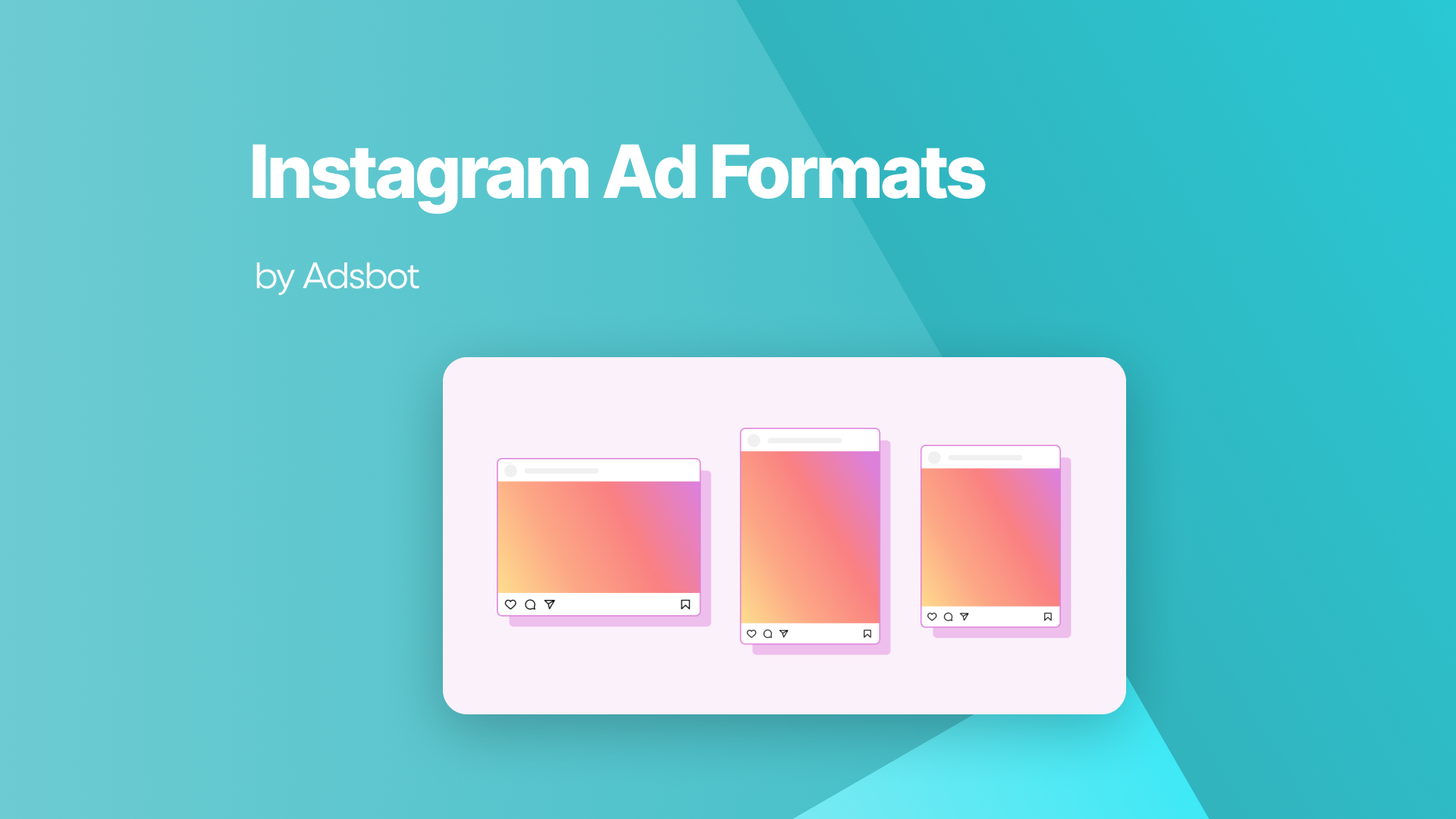Comprehensive Guide To Instagram Ad Reporting: Boost Your Campaigns With Data-Driven Insights
In the ever-evolving world of digital marketing, Instagram ad reporting has become an essential tool for businesses to measure the success of their advertising efforts. As brands continue to invest in Instagram's ad platform, understanding and optimizing ad performance has never been more critical. This guide will walk you through the intricacies of Instagram ad reporting, providing actionable insights to help you enhance your campaigns.
With over 2 billion monthly active users, Instagram offers a vast audience for brands to reach and engage with potential customers. However, merely running ads is not enough. To maximize return on investment (ROI), businesses need to leverage Instagram ad reporting to analyze performance metrics and refine their strategies.
This article will delve into the significance of Instagram ad reporting, how to set up and use it effectively, interpret key metrics, and provide tips to improve your ad performance. Whether you're a beginner or an experienced marketer, this guide will equip you with the knowledge to make data-driven decisions.
- Jesiree Dizon Stephen Bishop Split
- Teyana Taylor And Iman Shumpert Wedding
- Country Songs In Movies
- The Brat And Allen Iverson
- Kelly Clarkson Red Carpet
Table of Contents
- Introduction to Instagram Ad Reporting
- How to Set Up Instagram Ad Reporting
- Understanding Key Metrics in Instagram Ad Reporting
- Tools for Instagram Ad Reporting
- Optimizing Your Ads Using Instagram Ad Reporting
- Best Practices for Instagram Ad Reporting
- Analyzing Instagram Ad Performance
- Common Challenges in Instagram Ad Reporting
- The Future of Instagram Ad Reporting
- Conclusion
Introduction to Instagram Ad Reporting
Instagram ad reporting is a powerful feature that allows advertisers to track, measure, and analyze the performance of their ad campaigns. By providing detailed insights into ad metrics, this tool helps businesses understand how their campaigns are performing and identify areas for improvement.
The importance of Instagram ad reporting cannot be overstated. In a competitive digital landscape, businesses need to ensure that their ad spend is optimized for maximum ROI. Reporting tools provide the necessary data to make informed decisions about campaign strategies, targeting options, and budget allocation.
Instagram ad reporting also plays a crucial role in enhancing user engagement. By analyzing engagement metrics such as likes, comments, shares, and click-through rates, businesses can refine their content to better resonate with their target audience.
- Koreen Odiney
- Patti Labelle 80th Birthday Party
- Venomous Sea Worms
- Wienermobile Mini
- Elizabeth Taylor Mike Todd
How to Set Up Instagram Ad Reporting
Setting up Instagram ad reporting is a straightforward process that requires access to Facebook Business Manager and the Ads Manager interface. Follow these steps to get started:
- Log in to your Facebook Business Manager account.
- Access the Ads Manager tool by navigating to the "Ads Manager" tab.
- Select the campaign you wish to monitor or create a new campaign.
- Under the "Reporting" section, customize the metrics you want to track.
- Set up automated reports or schedule regular email updates for performance data.
Once the setup is complete, you can begin monitoring your ad performance and making data-driven decisions to enhance your campaigns.
Customizing Your Instagram Ad Reporting
Customization is key to tailoring Instagram ad reporting to your specific needs. Here are some customization options:
- Select Metrics: Choose the metrics that are most relevant to your campaign goals, such as reach, impressions, clicks, and conversions.
- Filter Data: Use filters to analyze specific time periods, ad sets, or audiences.
- Export Reports: Export data in various formats (CSV, Excel) for further analysis or presentation purposes.
Understanding Key Metrics in Instagram Ad Reporting
To effectively utilize Instagram ad reporting, it's essential to understand the key metrics that define ad performance. Below are some of the most important metrics:
- Reach: The number of unique users who have seen your ad.
- Impressions: The total number of times your ad has been displayed.
- Engagement: The number of interactions with your ad, including likes, comments, and shares.
- Click-Through Rate (CTR): The percentage of users who clicked on your ad after viewing it.
- Conversion Rate: The percentage of users who completed a desired action, such as making a purchase or filling out a form.
By monitoring these metrics, businesses can gain valuable insights into their ad performance and make necessary adjustments to improve results.
Interpreting Instagram Ad Metrics
Interpreting Instagram ad metrics requires a clear understanding of what each metric represents. For instance, a high reach with low engagement may indicate that your ad is being shown to the wrong audience. Conversely, a high click-through rate with low conversion rate could suggest issues with landing page optimization.
Tools for Instagram Ad Reporting
Several tools are available to enhance Instagram ad reporting capabilities. Below are some of the most popular options:
- Facebook Ads Manager: The primary tool for managing and reporting on Instagram ads.
- Google Analytics: Provides detailed insights into website traffic generated by Instagram ads.
- Third-Party Tools: Platforms like Hootsuite, Sprout Social, and Buffer offer advanced reporting features for Instagram advertisers.
These tools provide a comprehensive view of ad performance, enabling businesses to optimize their campaigns more effectively.
Integrating Tools for Enhanced Reporting
Integrating multiple tools can enhance the depth and accuracy of Instagram ad reporting. For example, combining Facebook Ads Manager with Google Analytics allows businesses to track both ad performance and website behavior, providing a holistic view of campaign success.
Optimizing Your Ads Using Instagram Ad Reporting
Instagram ad reporting is not just about monitoring performance; it's also about using the data to optimize your campaigns. Here are some tips for improving your ad performance:
- A/B Testing: Experiment with different ad creatives, copy, and targeting options to identify the most effective combinations.
- Refine Targeting: Use demographic and interest-based targeting to reach the most relevant audience for your product or service.
- Optimize Budget Allocation: Allocate more budget to high-performing ads and pause underperforming ones.
By continuously testing and refining your ad strategies, you can achieve better results and maximize your ROI.
Best Practices for Ad Optimization
Ad optimization requires a strategic approach. Below are some best practices to consider:
- Focus on High-Quality Visuals: Instagram is a visual platform, so invest in eye-catching images and videos.
- Leverage Instagram Stories Ads: These ads offer a unique way to engage users and can drive significant results.
- Use Call-to-Action (CTA) Buttons: Encourage users to take action by incorporating clear and compelling CTAs in your ads.
Best Practices for Instagram Ad Reporting
Adopting best practices can significantly enhance the effectiveness of Instagram ad reporting. Below are some recommendations:
- Set Clear Objectives: Define specific goals for your campaigns, such as increasing brand awareness or driving sales.
- Monitor Regularly: Consistently track your ad performance to identify trends and make timely adjustments.
- Utilize Benchmarking: Compare your ad performance against industry standards to gauge your success.
By following these best practices, businesses can ensure that their Instagram ad reporting efforts are aligned with their overall marketing goals.
Implementing Best Practices
Implementing best practices requires a proactive approach. Regularly review your reporting data and collaborate with your team to implement changes that can improve ad performance.
Analyzing Instagram Ad Performance
Analyzing Instagram ad performance involves interpreting the data provided by reporting tools and drawing actionable insights. Below are some key steps in the analysis process:
- Identify Trends: Look for patterns in your ad performance data to understand what works and what doesn't.
- Pinpoint Weaknesses: Identify areas where your ads are underperforming and develop strategies to address them.
- Measure Success: Evaluate whether your campaigns are meeting their objectives and adjust strategies as needed.
Through thorough analysis, businesses can refine their ad strategies and achieve better outcomes.
Tools for Analyzing Performance
Various tools can assist in analyzing Instagram ad performance. Platforms like Facebook Insights and third-party analytics tools offer advanced features for data interpretation and visualization.
Common Challenges in Instagram Ad Reporting
While Instagram ad reporting is a valuable tool, it does come with certain challenges. Below are some common issues and solutions:
- Data Overload: With so much data available, it can be overwhelming to focus on the most relevant metrics. Solution: Prioritize key metrics aligned with your campaign goals.
- Attribution Challenges: Accurately attributing conversions to specific ads can be difficult. Solution: Use multi-touch attribution models to better understand user journeys.
- Changing Algorithms: Instagram's algorithms are constantly evolving, affecting ad performance. Solution: Stay updated with platform changes and adapt your strategies accordingly.
By addressing these challenges, businesses can overcome obstacles and achieve greater success with their Instagram ad campaigns.
Overcoming Reporting Challenges
Overcoming reporting challenges requires a combination of technical expertise and strategic thinking. Regularly update your knowledge of Instagram's features and best practices to stay ahead of the curve.
The Future of Instagram Ad Reporting
The future of Instagram ad reporting looks promising, with advancements in technology and data analytics driving innovation. Below are some trends to watch:
- Artificial Intelligence (AI): AI-driven tools will enhance ad reporting capabilities, providing more accurate and actionable insights.
- Enhanced Analytics: New analytics features will offer deeper insights into user behavior and campaign performance.
- Integration with Other Platforms: Instagram will likely integrate more closely with other platforms, providing a unified reporting experience.
As technology continues to evolve, Instagram ad reporting will become even more powerful, enabling businesses to achieve greater success in their marketing efforts.
Preparing for the Future
To prepare for the future of Instagram ad reporting, businesses should invest in staying informed about emerging trends and technologies. Embracing innovation will ensure that your ad strategies remain effective and competitive.
Conclusion
Instagram ad reporting is a critical component of successful digital marketing. By understanding and leveraging the insights provided by reporting tools, businesses can optimize their ad campaigns, enhance user engagement, and achieve better ROI.
To recap, this guide has covered the importance of Instagram ad reporting, how to set it up, key metrics to track, tools for enhanced reporting, optimization strategies, best practices, performance analysis, common challenges, and future trends.
We encourage you to take action by implementing the tips and strategies outlined in this guide. Don't forget to share your thoughts and experiences in the comments section below. For more valuable content, explore our other articles on digital marketing and social media advertising.
- Winner Of Season 13 Project Runway
- Sofia Detorres
- Christmas Card Kardashian 2013
- Jlo And Max
- Wienermobile Mini

Instagram Ads Reporting Swydo

Instagram Ad Formats Adsbot

Instagram Ad Revenue 2025 (New Data & Reports)